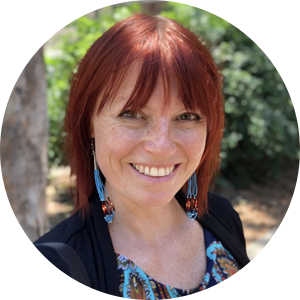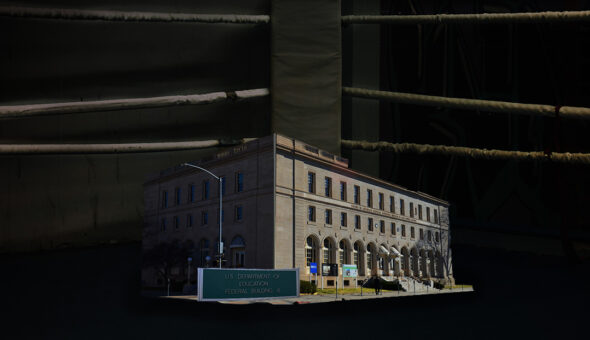The theme of eduWeb’s spring showcase is “higher education’s most creative ideas and solutions during a year of disruption.” If the source of that disruption weren’t obvious enough, the fact that eduWeb’s second virtual conference of the COVID era is being held exactly one year (more or less) since the pandemic shut down modern life as we know it highlights those origins.
It’s quite arguable, then, that professional development is more needed in higher education than ever, making the insights and learnings offered by the speakers and panelists at this two-day event all the more timely.
Here are some key takeaways and critical questions that were explored during the 2021 eduWeb spring showcase:
Why storytelling matters more than ever
The value of higher ed has declined in public perception. “This is our problem,” says Andy Fuller, director of strategic content at the University of Notre Dame. That’s why it’s imperative that higher ed marcomm demonstrate the importance of higher ed. The secret sauce to being effective is good storytelling:
- Be intentional and interesting, building stories with the classic elements of characters (i.e.faculty, staff, students), setting (the campus, engineering lab, etc.), conflict (real-world context), plot (what problem are we trying to solve through knowledge) and resolution (which actions have been taken).
- To make the most of it, content should be produced once and used in multiple formats.
- However, Fuller says, “a news release, Twitter thread, campus beauty montage, letters from the Dean, Mission Statement will never be storytelling,” because these almost always fail to evoke emotion.
- To find that emotion, identify work that matters, topics that give the audience an understanding of the university they didn’t have before, layered with storytelling elements: “We inform with facts, we influence with emotion.”
Embrace the art (and science) of storytelling
Ravi Jain, senior associate director of digital media and web development at Boston College, is fascinated by the transactional communication between storyteller and recipient.
- That neural connection is made when listening, processing and reacting. In fact, brain patterns synch between narrator and listener, creating a unique connection between individuals.
- What often happens in higher ed however, is what Jain calls the “Groundhog Day experience,” in which it’s the same stories about commencement, move-in day, finals week, graduation, etc. that are being told over and over again.
- Rather than telling the same old tale in the same old format, Jain advocates for experimentation: finding new, creative and exploratory ways to share stories across various platforms.
- To be successful, you don’t just have to know your demographic and how the audience accesses your content, but know your organization, be secure with who your university is and what it stands for.
- Jain shows how an organization can share authentic, charming stories that share legitimate information in new, more effective ways.
- Examples include “Fresh Takes,” Instagram Stories featuring unedited student interviews, TikTok scavenger hunts, 360 videos that show spaces and allow viewers to change angles and shape their own experience. He encourages us to start trying new things and lean more fully into creative storytelling that creates engaging stories.
Create content that comes alive
Sydnee Logan, senior social media & digital content specialist at the Johns Hopkins School of Nursing presented a jam-packed session full of practical tips for creating the best content.
- First and foremost, as many of us are teams of one, we have to set and manage realistic expectations.
- Think ahead and schedule a calendar of promotional content across the year like choosing awareness days that align with organizational priorities and community interest; love it or hate it, Canva allows you to quickly create templates and professional designs.
- Find stories by following top-performing themes on social media and around the web, tell the stories that you’ve heard about that are still unwritten and build meaningful relationships with others.
- Embrace user-generated content: Reach out to schools or individuals for photo submissions or accomplishments, try social media takeovers, submit blog posts or even consider giving them a series. If you find something people are excited about, they will participate and share their pride in your organization or program.
The most “aligned” content features a good story, resonates with the community and highlights a campus program or initiative like the article Advice from Black Psychiatric Mental Health Nurse Practitioners that Syndee published during Black History Month.
What will higher education look like in five, 10, and 20 years?
This panel was moderated by education marketing expert Seth Odell and featuring panelists Beau Brooks, Dr. Cherron Hoppes, and Dr. Adrian Haugabrook.
- The coming student generation wants to be more involved, have individualized classes and shape their own experience like never before.
- Universities will have to adjust conventional degree models with flexible formats like boot camps, stacked credentials and shorter certification courses to stay relevant.
- Innovation is hindered by budget constraints and demands of employers, who often still require traditional degrees.
- To stay relevant, learning institutions have to return to their core, define their program strengths and highlight what they do exceptionally well.
- We need world-class instructional design to deliver student-centric quality experiences that are relevant to the job market. Private/public partnerships can provide new ideas and opportunities.
- The university’s marketing department is essential in this development, and can give leadership a sense of what’s happening outside the institution, and see how learners respond to messaging and experimental programs.
- “It has never been harder to be a marketer in higher ed, but it has never been more valuable either,” Odell said. “We have never been more needed.”
PADS: A framework for student recruitment metrics
Corynn Myers, strategist at Convince & Convert, said “I get unreasonably mad when looking at social reports with no context for the data or metrics that tie into business goals.” Her PADS approach (People, Agreement, Data, Strategy) is a tool to break down silos and own the enrollment funnel.
- People: Create an anti-silo where admissions, marketing and university decision makers are invited to the same table to define common goals.
- Agreement: It is vital to agree on what success looks like, and determine SMART goals, objectives and KPIs together, as well as hash out the (often-complicated) student journey, outline responsibilities and reporting deliverables along the way. This includes a shared terminology, the kind of reports, ways of delivery and how often they are shared.
- Data: Historical data is essential to understanding the student experience as well as gut-checking KPIs and goals. Teams should openly share data with each other and determine benchmarks to fully understand budget needs.
- Strategy: Reporting deliverables do not measure themselves, so at the beginning of each campaign, a comprehensive tracking and measuring strategy has to be implemented.

How to build and grow a UX community on campus
With the goal of breaking down UX silos at the University of Arizona, Rebecca Blakiston, user experience librarian and strategist, explained the UX@UA grassroots learning community.
- UX@UA is a group of students, staff, faculty and community experts that meets monthly (virtually, of course) to discuss all things UX and user research.
- The cross-departmental team of organizers quickly built a community of more than 380 people who meet, discuss topics on Slack and consult at the university.
- Free tools like the UX cookbook are shared on the website, and users can sign up as study participants.
- The pandemic has actually enabled more participants and speakers to join UX@UA (again, via virtual events), which proclaims itself the largest community for user experience learners and professionals in Southern Arizona.
How to position your brand when the media spotlight turns to you
Alonda Thomas, director of public relations at Howard University, shared how her institution seized the spotlight shined on it after Kamala Harris’s historic election as vice president.
- Thanks to her office’s intensive research and preparation, international media was able to share personal interviews with Harris’s alumnae sorority sisters and University President Dr. Wayne A. I. Frederick.
- These included stories about the Showtime Marching Band, who escorted Kamala Harris and Joe Biden in the 59th Inauguration parade.
- In January 2021 alone, 140-plus interviews totaled over 760 million media impressions. On social media, the #HU2WH hashtag garnered some 4.1 million impressions, and reached more than 1.5 million individuals.
How well do you know your audience? Modeling inclusive language
Dr. Alan Mueller, assistant dean of students at Salem College discussed how diverse audiences receive messaging through their varied lenses, delving into clear definitions of race and gender as examples of the social constructs that influence the way we communicate.
- Racism and genderism can show up in language, symbols and messaging and can deeply affect the relationship between the university telling a story and the audience receiving the same story.
- Higher ed administrators and marketers must be aware of intersectionality in all communications, and adjust style guides which are often built around Euro-centric communication norms and still considered “correct” although they can be inherently harmful.
- Ableist terms like “standing meetings” or talking about what people will “see” or “hear” can alienate people with varying abilities. Rethink your language to be truly inclusive and model the ability to constantly learn.
Using analytics to guide web design
Aaron Baker, associate director for content strategy at Harvard University, described the research and outcomes in building the new structure for harvard.edu.
- OHO Interactive was hired to help with the initial research phase and determined the main goal of the redesign to establish an effective navigation, refocusing it around engaging storytelling with inspiring and inclusive messaging.
- The new site was designed to be a model of accessibility, with an intuitive navigation that enables effective wayfinding. Then it was up to the content strategy team to determine the right use of data.
- “Data is never going to suggest trying something new, your data just shows what you already have.” Baker said. That tension between quantitative data and qualitative insights exemplified the disconnect between user expectations and current content.
- Looking at data from user flows, event tracking (scroll depth, multimedia interaction, click paths), and on-site search, the team used analytics to see how users reacted to new design strategies. Future testing is part of the strategy to ensure continuous improvement.







